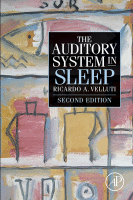Browse content
Table of contents
Actions for selected chapters
- Full text access
- Book chapterAbstract only
Chapter 1 - Brief Analysis of the Auditory System Organization and its Physiologic Basis
Pages 1-39 - Book chapterAbstract only
Chapter 2 - The Physiological Bases of Sleep
Pages 41-82 - Book chapterAbstract only
Chapter 3 - Notes on Information Processing
Pages 83-90 - Book chapterAbstract only
Chapter 4 - Auditory Information Processing During Sleep
Pages 91-111 - Book chapterAbstract only
Chapter 5 - Auditory Unit Activity in Sleep
Pages 113-145 - Book chapterAbstract only
Chapter 6 - Auditory Influences on Sleep
Pages 147-159 - Book chapterAbstract only
Chapter 7 - Tinnitus Treatment During Sleep
Pages 161-184 - Book chapterAbstract only
Chapter 8 - Other Sensory Modalities in Sleep
Pages 185-195 - Book chapterAbstract only
Chapter 9 - Brain Networks and Sleep Generation: A Hypothesis on Neuronal Cell and Assembly Shifts, a New Short Approach
Pages 197-199 - Book chapterAbstract only
Chapter 10 - Final Conclusions
Pages 201-206 - Book chapterNo access
Insert’s Index
Pages 207-209 - Book chapterNo access
Index
Pages 211-218
About the book
Description
The Auditory System in Sleep, Second Edition presents a view of a sensory system working in a different state, that of the sleeping brain. This updated edition contains new chapters on topics such as implanted deaf patients and sleep and tinnitus treatments. It is written for basic auditory system and sleep researchers, as well as practitioners and clinicians in the Auditory/Sensory Neurosciences and Sleep Medicine. As the auditory system is always “open”, thus receiving information from the environment and the body itself (conscious and unconscious data), the incoming sensory information may alter sleep and waking physiology, and conversely, the sleeping brain.
This book draws information from evoked potentials, fMRI, PET, SPECT, lesions, and more.
The Auditory System in Sleep, Second Edition presents a view of a sensory system working in a different state, that of the sleeping brain. This updated edition contains new chapters on topics such as implanted deaf patients and sleep and tinnitus treatments. It is written for basic auditory system and sleep researchers, as well as practitioners and clinicians in the Auditory/Sensory Neurosciences and Sleep Medicine. As the auditory system is always “open”, thus receiving information from the environment and the body itself (conscious and unconscious data), the incoming sensory information may alter sleep and waking physiology, and conversely, the sleeping brain.
This book draws information from evoked potentials, fMRI, PET, SPECT, lesions, and more.
Key Features
- Contains new chapters on topics such as implanted deaf patients and sleep and tinnitus treatments during sleep
- Written for researchers and clinical practitioners in the auditory sciences, sleep medicine and sensory neuroscience
- Contains new chapters on topics such as implanted deaf patients and sleep and tinnitus treatments during sleep
- Written for researchers and clinical practitioners in the auditory sciences, sleep medicine and sensory neuroscience
Details
ISBN
978-0-12-810476-7
Language
English
Published
2018
Copyright
Copyright © 2018 Elsevier Ltd. All rights reserved.
Imprint
Academic Press
